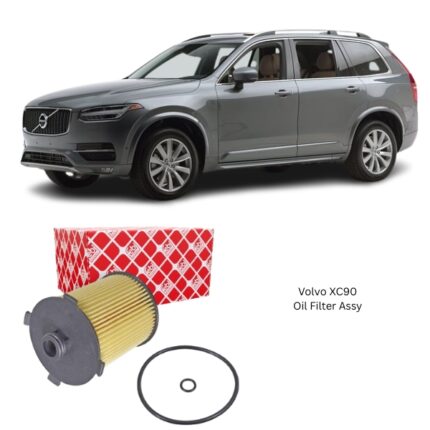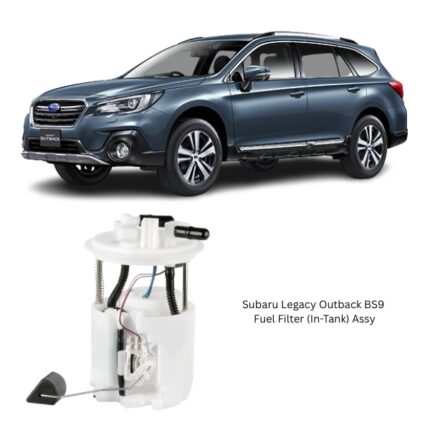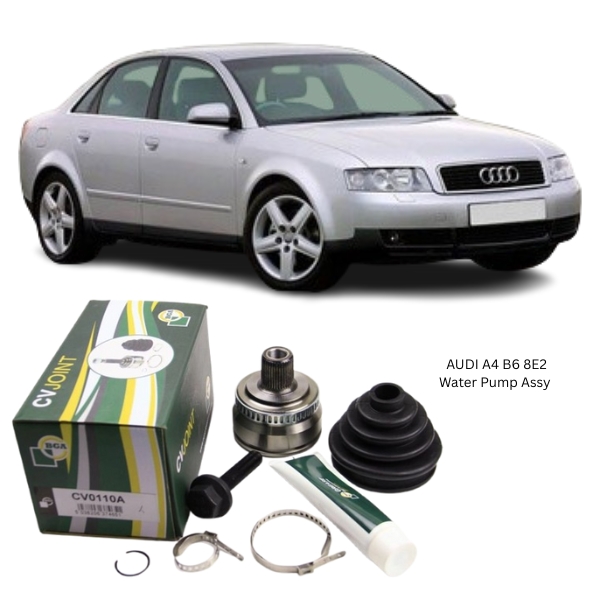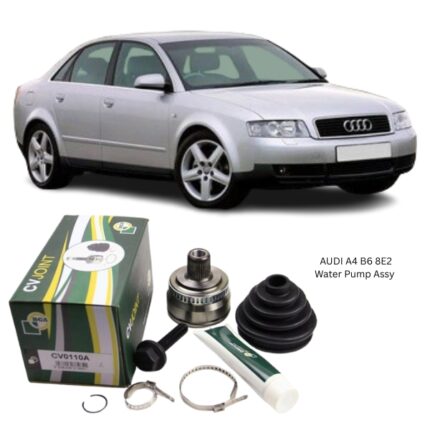Get AUDI A4 B6 8E2 Front CV Joint Assy With ABS RH/LH CV0110A in Kenya
The Front CV Joint Assembly with ABS (Right Hand or Left Hand) is a precision-engineered drivetrain component designed to transfer rotational power from the transmission to the front wheels while accommodating the full range of steering and suspension movement. It plays a critical role in ensuring smooth, efficient, and controlled power delivery in vehicles equipped with front-wheel drive (FWD) or all-wheel drive (AWD) systems.
When integrated with ABS (Anti-lock Braking System) capability, the CV joint assembly not only transmits torque but also works in harmony with wheel speed sensors to provide accurate braking control and stability.
Purpose and Function
The primary purpose of the front CV (Constant Velocity) joint assembly is to:
-
Transmit torque consistently from the gearbox to the wheels, regardless of steering angle or suspension travel.
-
Maintain constant rotational speed between input and output shafts, preventing vibrations.
-
Accommodate movement caused by suspension compression, extension, and steering rotation.
In vehicles equipped with ABS, the assembly incorporates a tone ring or reluctor wheel. This component interacts with a wheel speed sensor to provide precise speed readings for ABS control modules, ensuring optimal braking performance and vehicle stability under emergency braking or slippery conditions.
Construction and Components
A Front CV Joint Assembly with ABS typically consists of:
-
Outer CV Joint – Connected to the wheel hub, this joint handles large steering angles and supports suspension movement without interrupting power delivery.
-
Inner CV Joint – Connected to the transmission, designed to handle in-and-out movement (plunge motion) as the suspension operates.
-
Driveshaft/Axle Shaft – A strong, balanced steel shaft connecting the inner and outer CV joints.
-
ABS Tone Ring (Reluctor Wheel) – A toothed ring integrated into or mounted on the joint or hub end, read by a sensor to send wheel speed data to the ABS control unit.
-
Protective Rubber Boots – Flexible covers filled with grease that protect the CV joints from dirt, debris, and moisture while retaining lubrication.
-
Grease and Clamps – Specialized high-temperature, high-pressure grease inside the boots ensures smooth operation, while clamps keep the boots securely sealed.
Working Principle
When the vehicle is in motion, the engine’s torque is transmitted from the transmission to the inner CV joint. This joint allows a degree of axial movement to accommodate suspension travel. The driveshaft then transfers the power to the outer CV joint, which allows the wheel to steer left or right while continuing to rotate without speed variation.
The ABS tone ring rotates with the joint, and its teeth pass by the ABS sensor, generating an electrical signal. This signal corresponds to wheel rotation speed, enabling the ABS system to detect potential wheel lock-up and apply corrective braking pulses as needed.
ABS Integration
The integration of the ABS function into the CV joint assembly offers several advantages:
-
Accurate wheel speed detection for reliable ABS function.
-
Compact design, eliminating the need for separate tone rings on the hub in some designs.
-
Improved safety, ensuring precise control during sudden braking, cornering, or driving on slippery surfaces.
Advantages of a Well-Functioning CV Joint Assembly
A high-quality and properly maintained Front CV Joint Assembly with ABS provides:
-
Smooth power delivery without vibration or noise.
-
Enhanced steering control with minimal resistance.
-
Consistent ABS performance for maximum braking efficiency.
-
Reduced drivetrain wear due to constant velocity design.
Signs of Wear or Failure
The front CV joint assembly operates under high loads and is subject to constant movement, making it prone to wear if not properly maintained. Common symptoms of a failing CV joint assembly include:
-
Clicking or popping noises during turns, especially when accelerating.
-
Vibration or shuddering during acceleration or at higher speeds.
-
Grease splatter on the inside of the wheel or suspension components, often indicating a torn CV boot.
-
ABS warning light on the dashboard, potentially caused by a damaged tone ring or faulty sensor reading.
-
Knocking sounds when driving over uneven surfaces.
Common Causes of Failure
-
Boot Damage – Tears or cracks in the protective boots allow dirt, water, and debris to enter, leading to accelerated wear.
-
Grease Loss – Without proper lubrication, metal components grind against each other, causing damage.
-
Corrosion – Moisture intrusion can lead to rust and weakened parts.
-
Impact Damage – Hitting potholes, curbs, or debris can bend the shaft or damage the joints.
Maintenance and Replacement
Although the CV joint assembly is a durable component, it is not maintenance-free. Preventive measures include:
-
Regular inspection of the boots for cracks, tears, or loosened clamps.
-
Checking for grease leaks, which may indicate early damage.
-
Listening for unusual noises during low-speed turns or acceleration.
If damage is detected, the safest and most efficient repair is usually replacing the entire assembly rather than attempting to rebuild a worn joint. Replacement ensures both joints, the shaft, boots, and ABS components are in optimal working order.
Installation Considerations
When installing a new Front CV Joint Assembly with ABS (RH or LH), technicians should:
-
Ensure correct orientation (Right Hand or Left Hand) since length, spline count, and tone ring positioning differ between sides.
-
Verify compatibility with the ABS sensor type and alignment.
-
Torque all fasteners to manufacturer specifications to prevent premature wear or vibration.
-
Refill or replace transmission oil if any leakage occurs during removal.
Performance Specifications
A quality Front CV Joint Assembly with ABS should:
-
Withstand high torque loads without deformation.
-
Operate smoothly through maximum steering angles.
-
Maintain balanced rotation to prevent vibration at high speeds.
-
Provide consistent ABS signal output even under extreme driving conditions.
-
Resist corrosion, impact damage, and environmental contaminants.
Right Hand vs Left Hand Differences
While the function is identical, the Right Hand (RH) and Left Hand (LH) assemblies differ in:
-
Length of the driveshaft.
-
Spline configurations at the transmission or wheel hub end.
-
Tone ring position to match ABS sensor placement.
-
Plunge joint type depending on side-specific suspension geometry.
Using the correct side is crucial to ensure proper fit, balanced rotation, and reliable ABS performance.
Impact on Vehicle Safety and Performance
A properly functioning Front CV Joint Assembly with ABS contributes to:
-
Enhanced vehicle stability during acceleration, braking, and cornering.
-
Predictable braking control under emergency situations.
-
Improved driver confidence with reduced vibration and noise.
-
Extended drivetrain life due to efficient torque transfer and minimal wear on other components.
Neglecting a damaged CV joint assembly can lead to:
-
Loss of ABS function, reducing braking safety.
-
Complete joint failure, potentially resulting in loss of drive power.
-
Increased stress on transmission and suspension components.
Environmental and Recycling Considerations
Worn CV joint assemblies contain steel, rubber, and grease, which should be handled properly during disposal. Many parts can be recycled, reducing environmental impact. Proper waste oil and grease handling is also essential to avoid contamination.
Follow Us On Facebook For More Parts.





Reviews
Clear filtersThere are no reviews yet.